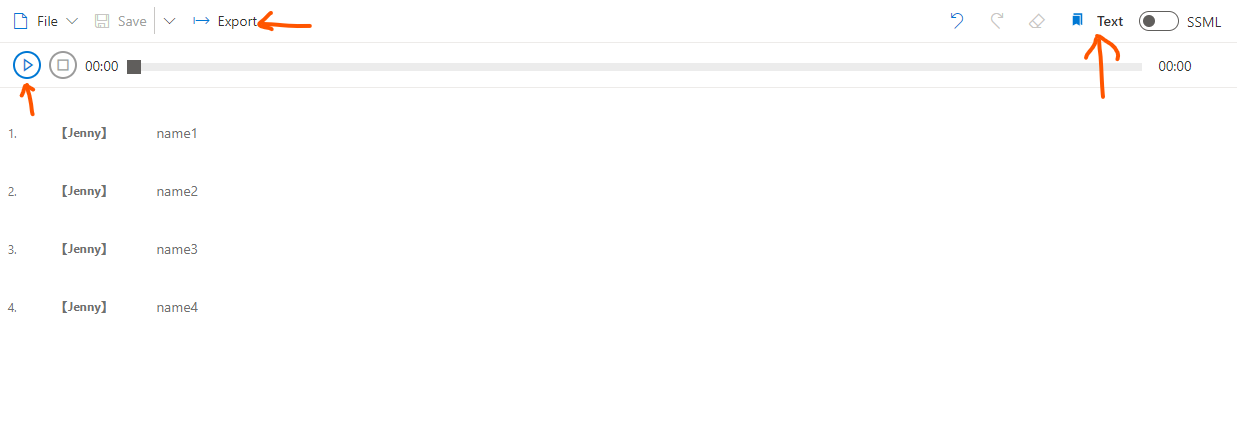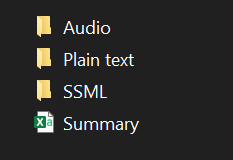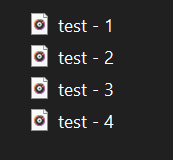@evisnetnim-2 I believe you tried to create a custom model for voice using some of the transcripts and corresponding audio but the model created from training did not end up as satisfactory.
If the base models or neural voices are something that works, you can try the audio content creation tool from the studio even with large data. Since you have names as your data in plain text you can calculate the number of characters from all these files and then paste them in the audio content creation tool in text format where the limitation is of 20000 characters in one file.
If we assume each name has around 10 characters then each file in the tool would contain 2000 names and this needs to be repeated for 150 times. Once the names are pasted in one file you could hit the play button this will create audio for all the text in the file. Once this action is complete you can export the files.

During the export there is an option to export to local disk, choose the following options and download.

This should download a zip file with the audio files, plain text, SSML and summary.

The audio files should be in the order in which you pasted them in the file and each file corresponds to an audio of the name.

You can now rename these files with the same names as pasted in the audio content creation tool. You can create a script to rename these files from the audio folder. I think this SO post could help to create one as the question is similar to this scenario.
You can now repeat this scenario for another set of names. The process is still a bit time consuming but if you can get this to work the first time it should not take a lot of time to complete the rest.
There could be a limitation with the pricing tier of your speech service if you exceed the number of characters as per plan and the availability of some neural voices would need approval from the speech service team for your subscription.
I hope this helps.
